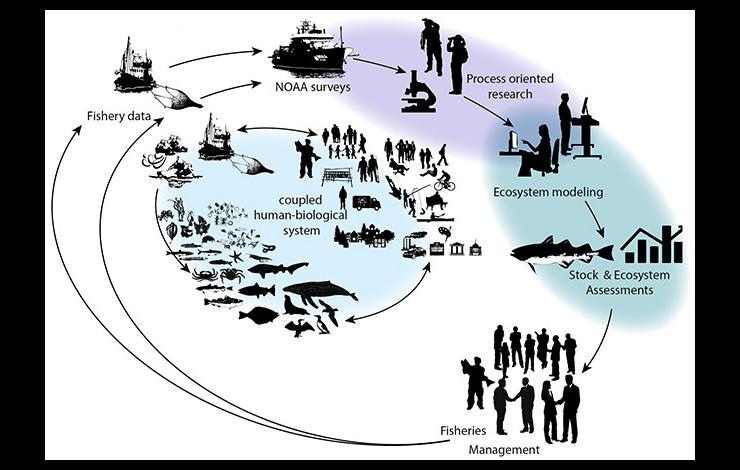NOAA Fisheries and its partners, including the Pacific Marine Environmental Laboratory, released Regional Action Plans (RAPs) on December 16th, to guide implementation of the NOAA Fisheries Climate Science Strategy in each region (Northeast, Southeast, Gulf of Mexico, Alaska, Western, Pacific Islands). Ecosystems and Fisheries Oceanography Coordinated Investigations (EcoFOCI) program lead Phyllis Stabeno (PMEL) and Janet Duffy-Anderson (AFSC) were co-authors on the Alaska Regional Report. The Alaska Fisheries Science Center and the Pacific Marine Environmental Laboratory have the scientific infrastructure needed to produce the analyses and deliver benchmarks for the eastern Bering Sea.
This Regional Action Plan identifies key actions to address priority information needs over the next five years to better understand, prepare for and respond to climate changes in the Bering Sea ecosystem. The Regional Action Plan, part of the NOAA Fisheries Climate Science Strategy, focuses on seven science objectives.
Alaska's fisheries are worth $1.8 billion and are vital to local economies and our country's food supply. Alaska is also at the front lines of a changing marine environment. To protect and maintain the region's resources, fishermen, lawmakers and other decision-makers need information to respond to these changes and protect livelihoods and traditional cultures.The Regional Action Plan will help Alaskan communities, commercial and recreational fishermen and others who are dependent on Alaskan marine resources respond and adapt to changes that may be ahead in response to a changing climate and help ensure the sustainability of these marine resources.
Read plan highlights here.
Read the full report in the NOAA Fisheries scientific publication, Technical Memorandum.
Learn about Regional Action Plans from across the country, here.



